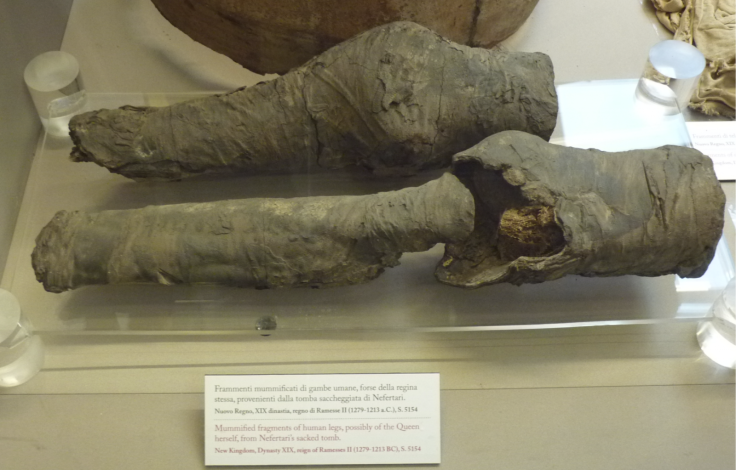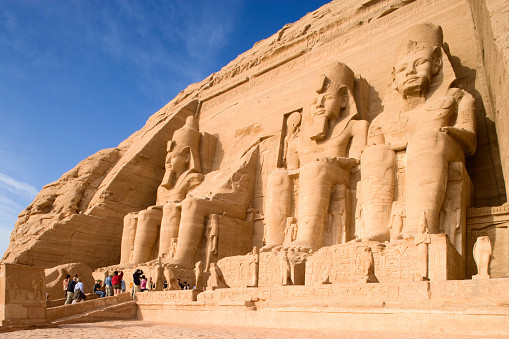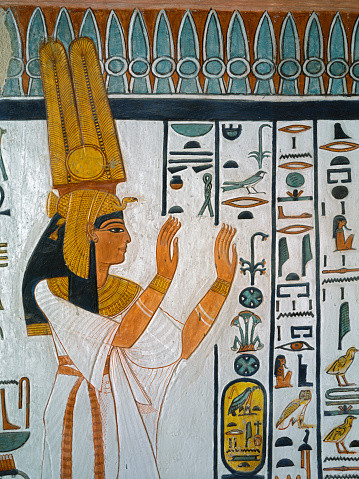Mystery mummified legs belong to Ramses II's favourite wife Queen Nefertari
The remains had been found in the queen's spectacular tomb, but it wasn't clear if they did belong to her.

Mummified legs found in the tomb of Nefertari most likely belonged to the deceased queen, scientists have announced.
It is also possible they belonged to one of her daughters or that they are linked to a secondary burial, but the evidence for this has so far been inconclusive.
Nefertari was the second and favourite wife of the great Pharaoh Ramses II, who ruled over ancient Egypt from 1279 BC to 1213 BC, during a time known as the 19th Dynasty. A range of historical sources suggest that she was highly educated and performed important diplomatic duties as queen.
Her tomb is considered to be one the most spectacular in Egypt's Valley of the Queens. A temple was also constructed and dedicated to her in Abu Simbel on the orders of Ramses II, near his own massive monument.
Nefertari's tomb was discovered in 1904 by Italian archaeologist Ernesto Schiaparelli. Although it remains a grandiose monument, looters broke into the tomb during antiquity and many of the precious artefacts have been stolen.
Beautiful wall paintings, a series of broken remains of jars, furniture and sarcophagi and a pair of sandals were nevertheless identified.
Archaeologists also found two fragmented mummified legs. These were widely believed to be the only surviving human remains of the queen, but no scientific analysis was conducted to verify this claim.

New research published in the journal Plos One performs a rigorous investigation to determine how likely it was that the legs belonged to Nefertari.
A queen burial
The international team of scientists took a very multidisciplinary approach to work on the mummified legs, which are housed in the Egyptian Museum in Turin in Italy. Various assessments were carried out, including x-rays, radiocarbon dating, chemical analysis, DNA analysis, comparison with other ancient and modern samples and an analysis of the sandals found in the tomb.
Most of the findings support the hypothesis of a queen's burial and strongly favour the hypothesis that these are the remains of Nefertari.

The X-rays confirmed the presence of a pair of human knees belonging to an individual that would have been 40 or over – roughly the age that the queen is estimated to have been when she died. Sample comparison indicate this person was a women, with 90% certitude.
The sandals, just like all the objects in the tomb appear to be rich, royal objects that were part of the original burial of Queen Nefertari. Analysing mitochondrial DNA and mummification methods and embalming materials used, the researchers say everything is consistent with a high-status burial from the 19th Dynasty.
Radiocarbon dating suggests that the bones date back to between 1607BC and 1450 BC, results which are slightly older than the assumed lifespan of Queen Nefertari but potential contamination of the remains with embalming products and sediment deposits over the years may have contributed to ageing the remains.
Other hypotheses, such as the possibility that the bones belonged to Nefertari's daughters is unlikely- most already have tombs elsewhere in Egypt. Likewise, a secondary burial at a later date does not seem credible as radiocarbon dating, chemical and archaeological analysis rule out a burial in the Third Intermediate or Late Period.
Study author Dr Frank Rühli, director of the Institute of Evolutionary Medicine at the University of Zurich told IBTimes UK: "We cannot completely prove that these are the remains of Nefertari but everything we have found seems to suggest it. It would have been easier to disprove it, for example if we had found the bones belonged to someone younger or to a child, but this is not the case, so right now this is the most credible theory".

© Copyright IBTimes 2025. All rights reserved.






















